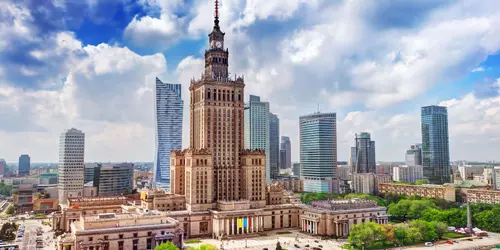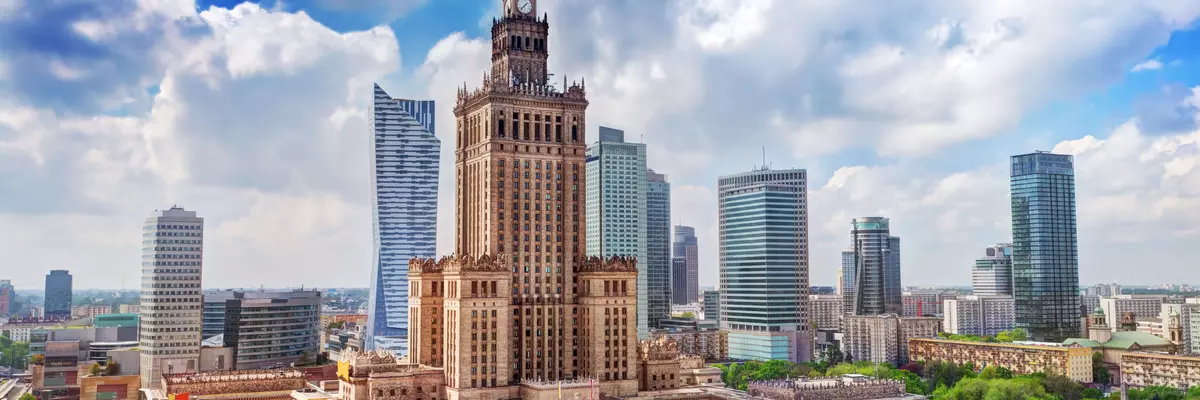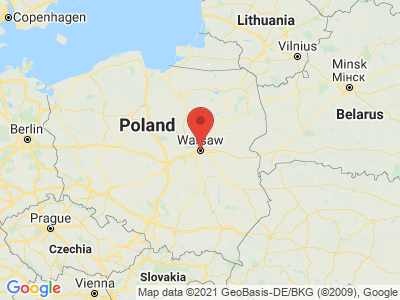The climate year of Warsaw
The Polish capital is located in the center of the Vistula River in its glacial valley and is embedded in the Middle Mazovian Depression. Therefore, Warsaw is located on average only 100 meters above sea level. Topographically, the city area is largely flat except for a steep embankment on the western bank of the Vistula. The Vistula River, which flows through Poland in a south-north direction, connects Warsaw with the Baltic Sea in the north and with the Caparts in the south of the country. Due to the geographical location of Warsaw in central Poland, the city is subject to various weather influences. This is expressed in a generally changeable weather and the different intensity of the seasons in a long-term comparison. While the maritime climate, which is mainly influenced by the Baltic Sea, provides humid and rather mild influences, the continental climate, which originates from the large land masses of Eastern Europe, is characterized by dryness and extreme temperatures.
General information about Warsaw
However, not only the climate of the city is changeable, also its appearance has many facets. In the Old Town, which forms the center of the city, historical and partly extremely magnificent buildings determine the cityscape. In addition to the world-famous Royal Castle, Warsaw offers many other palaces, churches and monuments. The Warsaw Mermaid, St. Martin's Church, the Wilanów Palace or the over 10 km long Royal Tract are just a few examples. All in all, this historic cityscape has led to the Old Town being declared a UNESCO World Heritage Site in 1980.
However, the more recent history of the ever-changing Poland can also be found in Warsaw. The Palace of Culture, with a height of about 230.5 meters, can hardly be overlooked and is the tallest building in the city. As a "gift of the Soviet people to the Polish nation", it still represented the era of Polish affiliation to the Warsaw Pact. Modernity has also already left its mark in the immediate vicinity of the Palace of Culture in the form of various mirrored office towers, providing further contrast.
Tourism Warsaw
Due to the already described location in a climatic border area, Warsaw is often referred to as having six rather than four seasons. The common seasons of spring, summer, autumn and winter are supplemented by the so-called early spring and early winter. These often deviate from the calendrical seasons and can also vary in their expression.
Early spring, which lasts about a month, begins in mid-March and is characterized by daytime temperatures in the low single digits. This is followed by spring in April and May, which is highly variable in terms of both temperature and precipitation. Summer, with warm temperatures, begins around May and can be very hot at times. It lasts about four months and especially towards the end, i.e. in August, there is often a stable period of good weather with mild temperatures. Experience shows that this also accompanies the beginning of the following autumn. Nevertheless, in the course of this period, temperatures fall back into the low single digits. In November, pre-winter usually begins and temperatures gradually reach freezing point. After about four to six weeks, the often snowy and frosty winter sets in.


